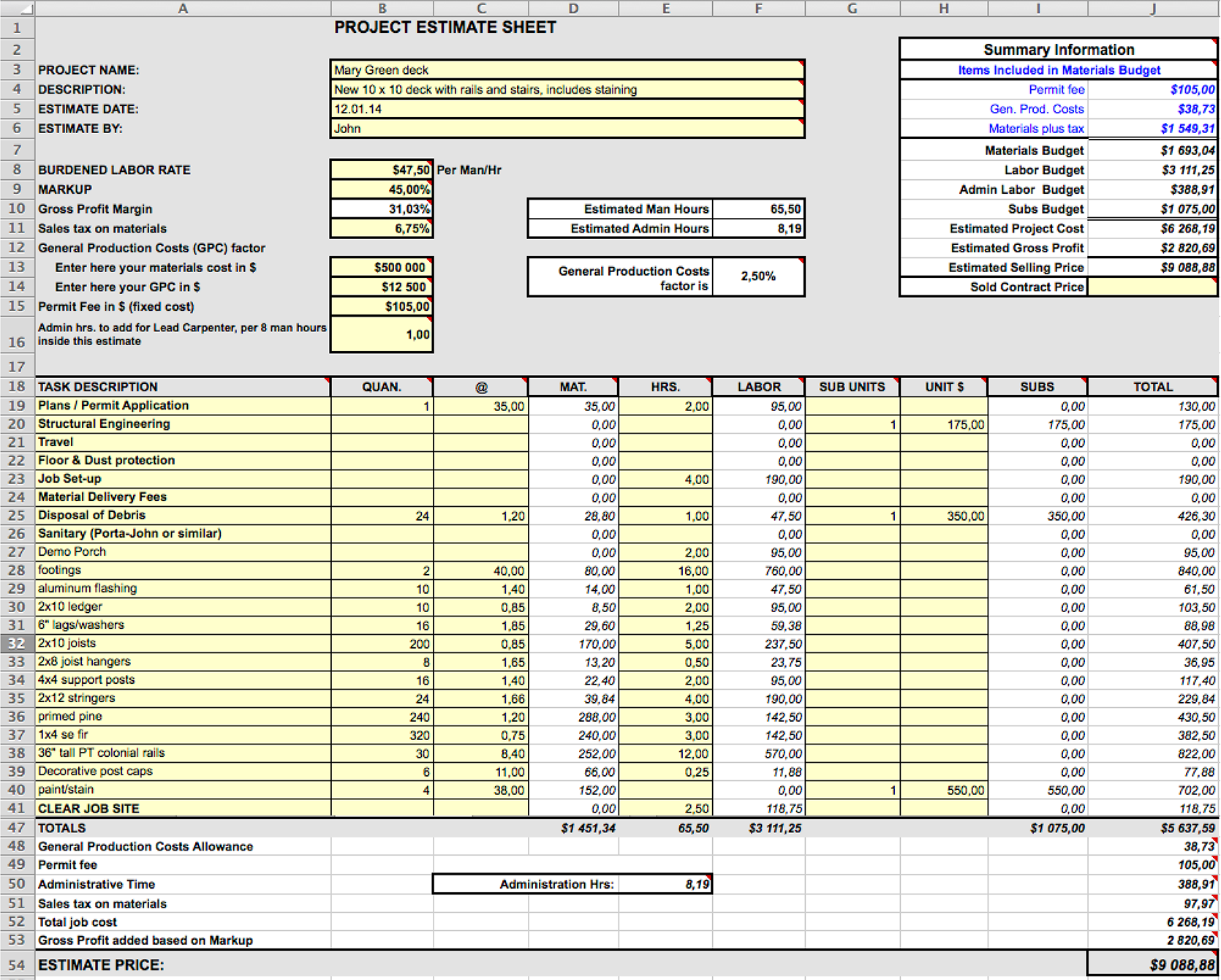Bidding out a project is when you give a potential client a proposal and estimate to complete their home improvement project. Clients will typically get bids from multiple contractors to help them figure out who they want to hire for their job.
The goal of the bidding process is to find the right balance between earning a profit while keeping costs low for your client to make sure they choose to hire you for the job. Bidding projects too low won’t make you any money, but nobody will hire you if your prices are too high.
We’re here to help you with a 5-step guide on how to find that balance and keep your business running smoothly.
1. Find a job you want to bid on and make sure you know the bid deadline.
The internet can be one of your best resources to help you search for bid jobs. Some sites even sell software to help you set up your bidding process.
Use one of the sites below to start your search:
- The System for Award Management (SAM) is the federal government’s free website used in the federal bidding and awards process.
- BidClerk includes a searchable database for private and public bid jobs throughout America.
You can also visit your state’s website, public school, and university websites for bid job listings. Additionally, you can find a bid job by word-of-mouth in your area.
Once you’ve found a job you want to bid on, make sure you find out important details like the deadline and where to send your information.
Keep in mind that in smaller towns, you will probably see more government bid jobs, while in major metropolitan areas, the likelihood of private jobs accepting bids will be higher.
2. Get costs for materials and subcontractors.
Jobs usually go to the lowest bidder, so doing your research to keep costs down is critical. You should visit a variety of hardware stores in your area and get cost lists for the materials you’ll need. Work on forming relationships with these places to ensure you’re getting the best deals. These stores want long-term customers they can count on too.
You’ll also want to take bids from any subcontractors you’ll need, and factor that into your costs. It’s recommended to contact at least three subcontractors in your area and make sure to get the lowest rate you can for their services. This is another time when building relationships can help you get the best deals.
Consider all of these costs when calculating a bid on a project.
3. Write and calculate the bid.
To submit a bid, you should create a line-item sheet showing the cost of each material and service you will need to complete the job. This should include not only material and labor costs, but also include expenses like local taxes and your markup. If your markup fee is 20%, make sure to include that in the figure. Remember, if you only list your direct costs, you will not make any profit. Remember to include labor costs and sales tax expenses.
You can use any spreadsheet software like Microsoft Excel or Google Sheets to write the bid.
Your bid should include the following:
- Project information: This should include the project’s name, and your company’s name, address, and contact information
- Bid recipient: Who or what company is receiving the bid
- Markup, taxes, and labor expenses: Multiple factors go into this component.
- Profit margin percentage - This is your fee for your services. Remember to account for about 5% for wasted material.
- Tax rate percentage - This is the sales tax on materials.
- Overhead/labor rate percentage - This is how much labor costs. Remember to include all of your crew and any insurance you may have for them.
- Bid bond percentage - How much did the bid bond cost? A bid bond is typically taken out to assure the winning bidder will complete the job as required in the construction contract.
- Start and end date - Tell the potential client the anticipated start and end date of the project.
- Bid items: This is the heart of your bid where you list the items that make up the bulk of your expenses.
- Materials - Make a line-item list of all necessary materials, quantities, and costs.
- Crew members - If you are using additional crew members on the job, list their hourly labor rate and overall cost.
- Subcontractors - List the cost for any subcontractors that will be needed for the project.
- Additional equipment/operators - List the cost of any additional equipment you will have to rent, as well as the cost of hiring an operator for that equipment.
Once you have calculated the total cost of bid items, plus your markup fees, taxes, labor costs, list a bid total on your spreadsheet.
The bid can be multiple pages and can be broken down into different categories or subtotals to make the document clearer.
An example of a bid sheet can be seen below:

You can request a copy of this bid template here.
4. Double-check your bid and make sure it’s correct.
Be sure to double-check your that you’ve listed everything necessary to complete the project and that all your costs are up-to-date. If you didn’t get a specific cost list for this particular project and are using prices from an older job, make sure you get updated prices. If the price of lumber went up since your last project, and you were not aware of the increase, you could be losing money on your material costs. By double-checking these costs, you can maximize your value and stay competitive in your builds.
5. Submit the bid.
Make sure you submit your bid before the deadline.
If for whatever reason, you didn’t win the bid, you can often see bids on government-funded jobs upon request to help you better understand where you missed out.